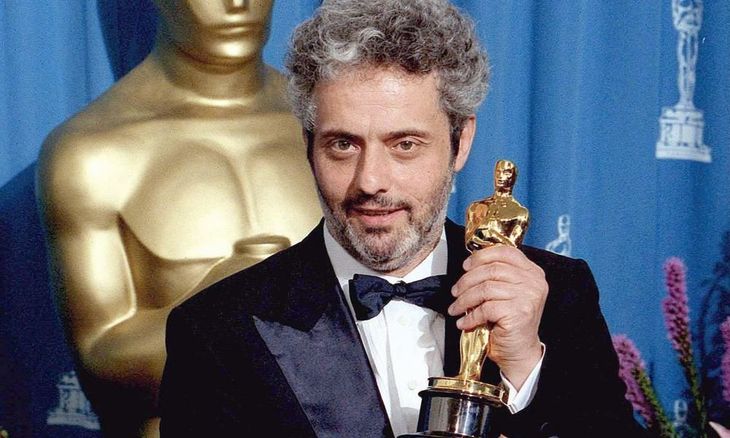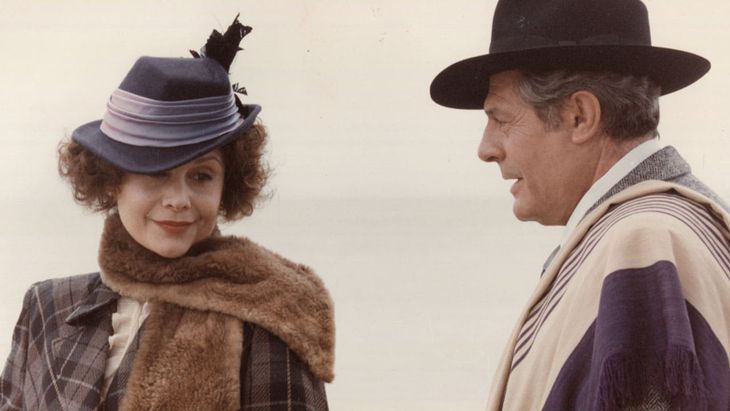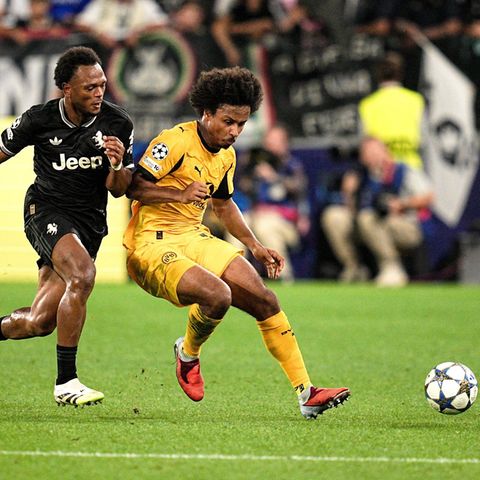Q.: Let’s talk about a topic that I know worries you, and that is the advancement of technology over art.
NP: Technological innovations, like all discoveries in history, can be used for both good and evil. Today, for example, we have Artificial Intelligence; Thousands of years ago it was Prometheus who brought fire to humanity. With fire we shelter ourselves, we cook food, but fire was also used to burn Giordano Bruno.
Q: And what is the evil in this case?
NP: These technological tools, for example, allow any fan access to things they don’t know about. An upstart, with a computer, today can compose music for cinema, or symphonic music, or whatever. Of course, he will be unable to write scores because he does not know how to do it, but the machine takes his place. But the main change is not technology, but the disappearance of movie theaters and their replacement by platforms; Audiovisual consumption on television, tablets and phones radically modified the relationship between a film and the viewer. It was one thing to enter a room where the lights were turned off and, for two hours, you watched a movie: the audience got excited, laughed, cried, all together. There was something of ritual in that communion. Today we see a miniseries of fifteen seasons, two hundred chapters, which the viewer interrupts to eat, talk on the phone… I’m not saying that it is better or worse, I am saying that it has nothing to do with the theatrical experience: cinema was born as imitation of theater. The paradigm has changed.
Q: The creation process was also modified
NP: Exact. Let’s go back to the era of neorealism. Alessandro Cicognini, the composer of the music of “Bicycle Thieves” and many other classics, including Totò’s comedies, wrote with a precise musical dramaturgy: it was a score written by an author. Now a film is set to music with a “playlist”. Different musical fragments are tested to achieve a specific effect. Everything on the computer. To put it more clearly: not only cinema but the entire society increasingly resembles the logic of advertising. Today, very brief shots are abused because that is how advertising communicates. The extensive sequence shot is very demanding. And I don’t like art to be subjected to the logic of advertising. Advertising must fulfill its mission; that of art is completely different, but today they are confused.
Q.: In the 60s and 70s, the viewer was challenged by a director’s proposals. Today it is the other way around, the platforms determine, through algorithms, what they like, what works, and the director submits to those tastes of the public at the request of the platforms.
NP: I partially agree. Years ago, Hollywood held test screenings: they showed a film to a specific audience, who then gave their opinion on what they had seen, suggested changes, and then the studio could modify or not modify the product according to the opinions. But there is a difference: that was an active audience, an audience that went to the movies. It is not the same as the platform viewer who carelessly watches a movie, or stops it to do something else.
Q: The aesthetics of the films are also different.
NP: What we said before: it is the advertising aesthetic, fast images, explosive cuts, short shots. When “Ben Hur” was filmed, the shots were very complex and elaborate, there were portentous images that today, perhaps, leave the modern viewer indifferent. In “Lawrence of Arabia”, the audience encountered never-before-seen landscapes, that immense desert, those extensive shots that made us feel alive. At that time, there was only a small black and white television at home. To marvel at “Lawrence of Arabia” you had to go out and pay an entrance fee. In 1954, in Italy, 800 million tickets were sold: 40 million Italians went to the cinema 800 million times. That doesn’t exist anymore. Even multiplexes are disappearing. Cinema poets must manage to create their works within the platforms. Some achieve it. But it is useless to try to go back. That is an extinct era.
Q: Festivals would be the only spaces left for authors.
NP: Yes, but festivals are still worldly celebrations. The red carpet, the dresses. In the past, after its premiere at a festival, a film was seen by millions of people in theaters around the world. Now, with the festival over, they skip the cinema: the films, with luck, go straight to the platform.
ginger-e-fred-5d2472236a7f1.jpg
Marcello Mastroianni and Giulietta Masina in “Ginger and Fred”, by Federico Fellini.
Fellini
Q: What was it like collaborating with Federico Fellini?
NP: A party. He had immense creativity, for me it never represented any effort to work with him, it was pure enjoyment. And unpredictable. I always remember an anecdote: when we were planning the music for “Ginger and Fred,” he told me that it was going to be a mockery of television, of frivolous entertainment and variety programs. So he wanted music like the one heard on those programs: “banal, repetitive, repetitive, pathetic.” I was taking note of all that. But in the end he remarked to me: “Of course, it has to be beautiful music.”
Q: You said that, in your training, “Eight and a Half” by Fellini was decisive.
NP: It was a shock. I was about 17 years old when it came out. “Eight and a Half” made me understand what cinema was and what cinema could be. It is an experimental film, revolutionary in its language, but not “intellectual.” It is artistic, expressive, communicative. Before her, experimental cinema was just an intellectual, anti-popular pursuit, but “Eight and a Half” is also popular. And with that musical masterpiece by Nino Rota! For me, in the history of cinema, there is “Eight and a Half” and then all the rest.
Q.: In addition to “Ginger and Fred”, you also worked with Fellini in “Interview” and “The Voice of the Moon”, his last film, which unfortunately was not very successful.
NP: It was a very advanced film for its time, prophetic I would say…
Oscar.jpg

Nicola Piovani wins the Oscar in 1999 for Best Original Score for “Life is Beautiful”, by Roberto Benigni
The Oscar and the controversy
Q.: Did you meet Roberto Benigni in “The Voice of the Moon”, in which he was the protagonist?
N.P:. No, we already knew each other long before, although later we started working together.
Q: Was it challenging to make a film like “Life is Beautiful”? Although it has a respectful script, there were and are those who maintain that humor cannot be used when dealing with a topic like the Holocaust.
NP: I already think it was a challenge, and I agree that it is a respectful film. And brave. After his success, and the Oscars, they began to celebrate him, but before that almost no one believed in him. How can a comic actor make a movie with the Shoah? It will be a fiasco, they said. In truth, the greatness of that film consists in its exact division into two parts: in the first we see characters full of life, joy, love, and suddenly, without dramatic transition, it goes from comedy to tragedy. That second part becomes even more tragic because in the first we saw the simplicity of those characters, who make jokes, who enjoy life. The same thing that happened to so many deportees to the camps.
Q: How were your experiences with the Taviani?
NP: They loved music. They knew her. And they made a cinema in which, they said, the words should only be the essential ones. Few words, to make room for music and images. The Taviani did not like films with a lot of dialogue, which is why, for me, it was extraordinary to work on so many films with them.
That’s not what we talk about.jpg

Luisina Brando and Marcello Mastroianni in “De eso no se puede” by María Luisa Bemberg, which had music by Nicola Piovani.
Argentina
Q.: You composed the music for two Argentine films: “De eso no se siempre”, by María Luisa Bemberg, and “El impostor”, which she was also going to film but, after her death, a disciple of hers made it. Alejandro Maci.
NP: Exact. I made the music for “El impostor” because María Luisa, a great woman, had entrusted it to me, but unfortunately it was done remotely, in Italy, because I didn’t have time to travel. On the other hand, I did come for “That’s Not Talked About,” with Marcello Mastroianni. It was my first trip to Argentina. We also went with the team to Uruguay, because a large part of the film was shot in Colonia. I have beautiful memories of that filming. María Luisa made me know so many things about Argentina… And with Mastroianni an unforgettable triangle was formed; I remember when he sang “Caminito” and I accompanied him on the piano. A magical moment.
Q: Do you feel freer when you compose music that is not for cinema?
NP: The difference is this: when I work for cinema, my purpose is to enter the poetics of an author, who can be either Fellini or a young debutant, and interact with that poetics. On the other hand, when I compose opera, and I have already written two, or symphonic music, or chamber music, or cantatas, I have to interact with my own poetics, which is a more severe judge. Maybe, yes, I am freer, but it is more tiring because of my self-demand.
Q: What was the last thing you composed for film?
NP: I did the music, and with great pleasure, for a film by Cristina Comencini, “The Children’s Train”, which moved me a lot. It will premiere this month at the Rome Film Festival. A story set in 1945, after the war. At that time in southern Italy, especially in Naples, there were many orphaned, poor children. Then the Italian Communist Party organized trips that picked up these children on trains and took them to the Emilia region, where there were families who sheltered them. The script is centered on a boy who feels the couple who took him into his care as his own parents; There he knows things he has never seen, like mortadella; everything surprises him. Conflict then ensues when he travels south and meets his birth mother. And when he grew up, that boy became a violinist, because his adoptive father was a luthier and one of the first things he gave him was a violin. It is a film that sheds light on a little-known story, that of those rescue trains.
Source: Ambito
I am an author and journalist who has worked in the entertainment industry for over a decade. I currently work as a news editor at a major news website, and my focus is on covering the latest trends in entertainment. I also write occasional pieces for other outlets, and have authored two books about the entertainment industry.




